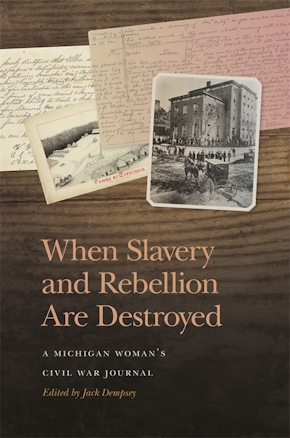Slavery on the Periphery
The Kansas-Missouri Border in the Antebellum and Civil War Eras
Title Details
Pages: 284
Illustrations: 3 b&w images
Trim size: 6.000in x 9.000in
Formats
Paperback
Pub Date: 07/15/2018
ISBN: 9-780-8203-5478-1
List Price: $29.95
Hardcover
Pub Date: 12/01/2016
ISBN: 9-780-8203-5050-9
List Price: $62.95
eBook
Pub Date: 12/01/2016
ISBN: 9-780-8203-5051-6
List Price: $62.95
Series
Subsidies and Partnerships
Published with the generous support of Andrew W. Mellon Foundation
Slavery on the Periphery
The Kansas-Missouri Border in the Antebellum and Civil War Eras
How the unique circumstances of slavery in a border region played a role in Bleeding Kansas, the Civil War, and the settlement of the American West
Skip to
- Description
- Reviews
Slavery on the Periphery traces the rise and fall of chattel slavery on the Kansas-Missouri border from the earliest years of American settlement through the Civil War, exploring how its presence shaped life on this critical geographical, political, and social fault line. Kristen Epps explores how this dynamic, small-scale system—characterized by slaves' diverse occupations, close contact between slaves and slaveholders, a robust hiring market, and abroad marriages—emerged from an established upper South slaveholding culture. Awareness of space and local landscapes was also a defining feature of slaves' experiences, because slave mobility could be a powerful means of resistance. This mobility became particularly crucial when the sectional conflict escalated in the 1850s and 1860s, as both enslaved and white residents became central players in a violent national struggle over the future of slavery in America.
Drawing on extensive archival research, Epps makes clear that slavery's expansion into Kansas was more than a theoretical, ideological debate. Chattel slavery was already extending its grasp into the West. By foregrounding African Americans' place in the border narrative, Epps illustrates how slavery's presence on this geographic periphery set the stage for the Civil War and emancipation here, as it did elsewhere in the United States.
—Stanley Harrold, American Historical Review
—Kristen Anderson, Civil War History
—E. R. Crowther, Choice
—J. Michael Crane, Agricultural History
—Jeanne McDonald, Journal of the Illinois State Historical Society
—James J. Gigantino II, Arkansas Historical Quarterly
—Michael F. Conlin, Journal of the Civil War Era
—Gunja Sengupta, Register of the Kentucky Historical Society
—Kelly Erby, Kansas History: A Journal of the Central Plains
Slavery on the Periphery … [is a] valuable contribution to the growing historiography of what Elliot West termed “Greater Reconstruction” in 2003. By examining the complex lived experiences of people in borderland regions… [Epps] reveals, in great detail, the complicated ways that slavery and wartime conflict shaped the culture, politics, and economy of places even on the periphery of nineteenth-century American society.
—R. Isabela Morales, H-Nationalism



